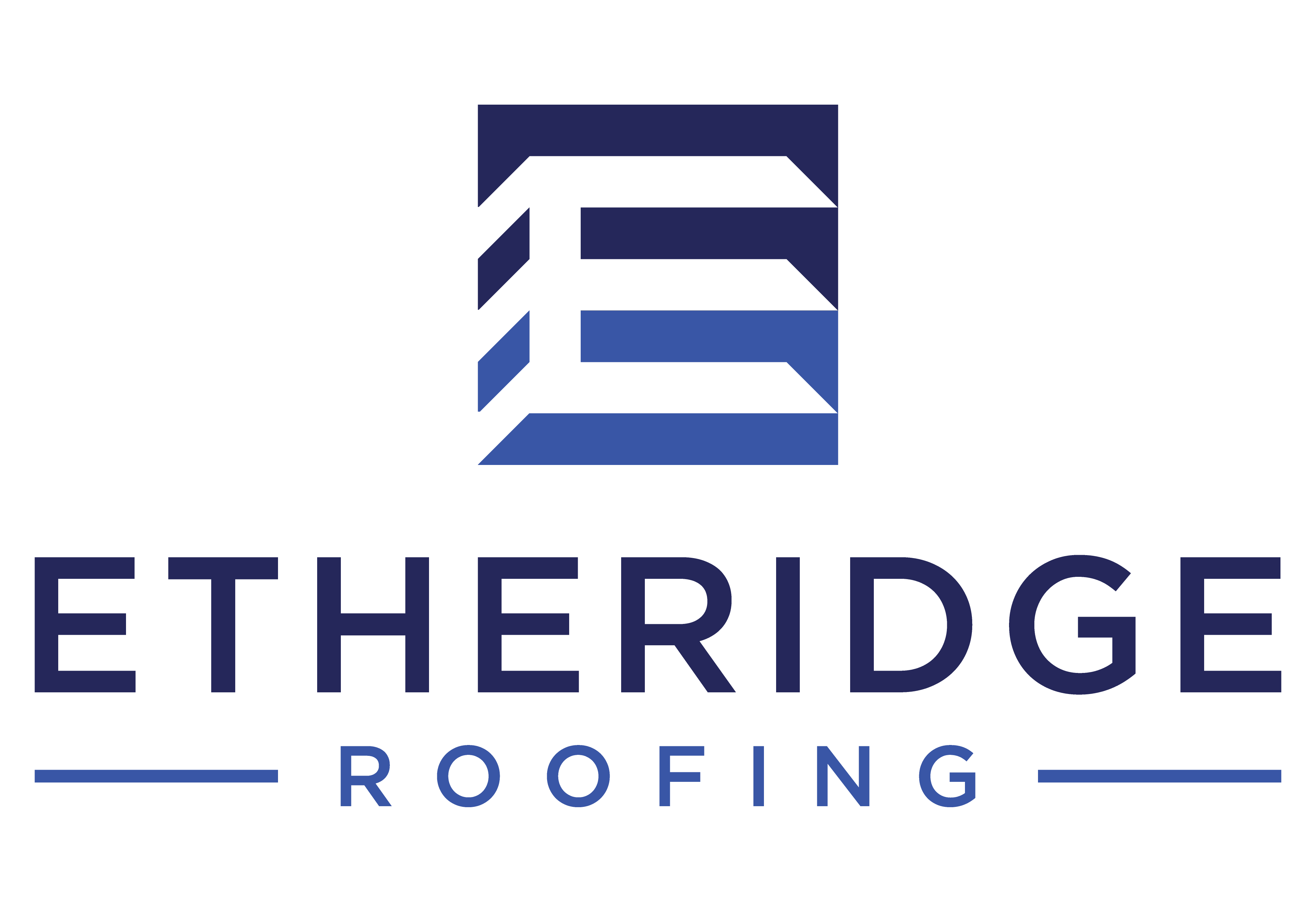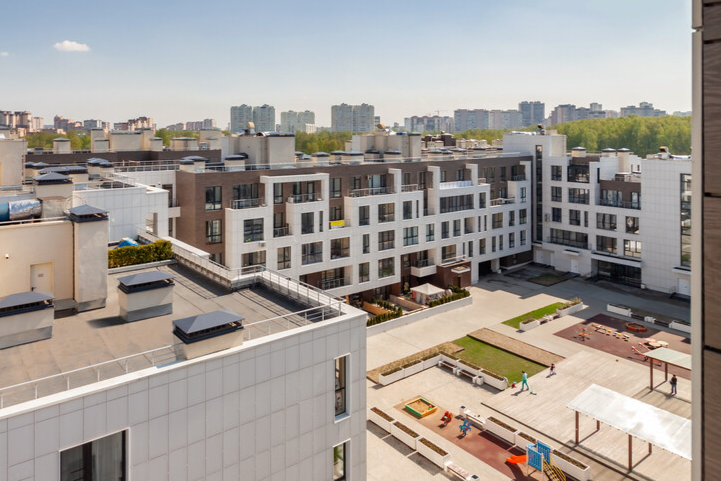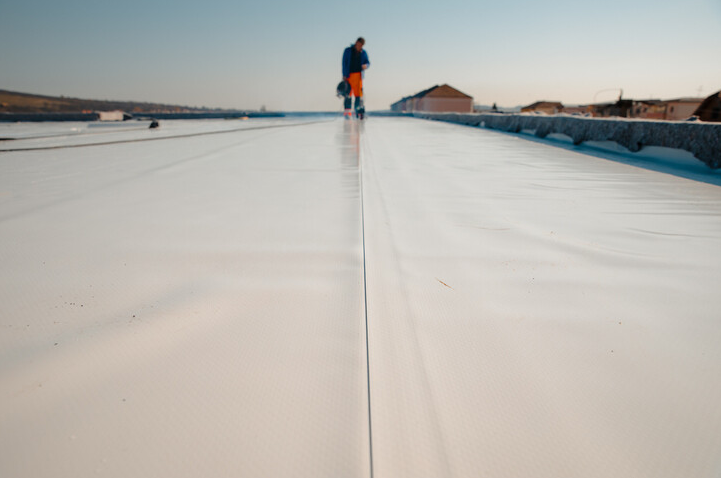The Complete Guide to a Commercial Flat Roof Project: From Inspection to Installation
The decision to embark on a commercial flat roof project, whether for repair or replacement, is significant for any property manager. It involves a substantial investment of time, resources, and effort to ensure the integrity and longevity of the roofing system. This guide aims to walk you through the critical stages of a commercial roofing project, from the initial inspection to the final installation, providing insights and considerations to make the process as smooth and efficient as possible. Whether you're navigating the early stages of inspection or gearing up for the installation phase, understanding the nuances of working with a reputable roofing contractor can make all the difference in achieving a successful outcome.
The Importance of a Thorough Roof Inspection
A thorough roof inspection stands as the cornerstone of any commercial flat roof endeavor. This initial, critical examination dives deep into the heart of your building's rooftop defenses, laying bare the current health of your roofing system. During this meticulous process, a seasoned professional scrutinizes every inch of your roof. They delve into the membrane's condition, the insulation's integrity, and the functionality of the drainage systems, on the hunt for signs of deterioration, water intrusion, or any damage that could threaten the structural soundness of the roof.
This step is far from a mere formality; it's a revealing insight that sheds light on the precise nature of the work required. The findings can range from highlighting minor repairs to underscoring the need for a complete roof overhaul. Armed with the knowledge gleaned from a detailed inspection, property managers are better positioned to make educated decisions, steering the project with clarity and foresight.
Importantly, this process doesn't just forecast immediate fixes but also anticipates potential future challenges, offering a chance to preemptively address issues before they escalate. In essence, a thorough roof inspection is the blueprint upon which the success of the entire project rests, ensuring every subsequent step is informed, intentional, and intricately tailored to the unique demands of your commercial flat roof.
Selecting the Right Roofing Material
Navigating the realm of roofing materials for your commercial flat roof is akin to setting the foundation for your project's long-term success. The material you choose should be a reflection of not only the architectural needs of your building but also a response to the local climate, environmental considerations, and, crucially, the financial framework within which you're operating. With options ranging from the resilience and longevity of EPDM, the energy efficiency and weldable seams of TPO, to the durability and chemical resistance of PVC, the spectrum of choices caters to diverse needs and preferences.
Delving into these materials, it becomes evident that each comes with its unique set of advantages. EPDM, for instance, stands out for its proven track record in withstanding harsh weather conditions, making it an ideal candidate for areas prone to extreme weather. On the other hand, TPO is celebrated for its reflective properties, offering an energy-efficient solution that can significantly reduce cooling costs. PVC, with its robustness against chemical exposure, emerges as a frontrunner for buildings susceptible to such environmental factors.
The process of selecting the right material transcends mere aesthetics or immediate cost considerations. It involves a deeper engagement with the intricacies of your building's requirements, balanced with a forward-looking approach to maintenance and longevity. Consulting closely with your roofing contractor, leveraging their expertise, ensures that the chosen material not only aligns with your project's specifications but also positions your commercial flat roof for optimal performance over its lifespan.
Finding a Trustworthy Roofing Contractor
Embarking on the journey to find a roofing contractor who embodies both expertise and integrity is critical in steering your commercial flat roof project towards success. The cornerstone of this search hinges on identifying professionals who not only have a profound understanding of commercial roofing systems but also boast a history of impeccable workmanship. This step, pivotal in its own right, demands a meticulous vetting process. It involves diving deep into the credentials of potential contractors, evaluating their portfolio of completed projects, and scrutinizing the feedback from previous clients.
One should approach this quest with a strategic mindset, seeking out multiple bids to ensure a competitive yet realistic assessment of cost and capabilities. The essence of this endeavor is not merely about finding someone who can do the job but uncovering a partner who brings a wealth of knowledge, reliability, and foresight to your project. This includes ensuring they hold the necessary licenses, insurance, and certifications that speak to their commitment to safety and quality.
A genuine and experienced contractor will engage in a transparent dialogue, offering insights and practical solutions tailored to the unique challenges and requirements of your project. They serve not just as executors of a task but as invaluable advisors, guiding you through the complexities of the roofing process with professionalism and care. This partnership, built on trust and mutual respect, is instrumental in navigating the intricacies of your commercial flat roof endeavor with confidence and precision.
Understanding the Installation Process
The installation process of your commercial flat roof is a meticulously choreographed sequence of actions, tailored to the unique specifications of the chosen material and the intricate demands of the project. Initially, the roof deck is prepared, ensuring a solid foundation for the layers that follow. Next, insulation is strategically placed, serving as a thermal barrier that will contribute to the building's energy efficiency. The roofing material is then carefully laid out, each section requiring precise alignment and secure fastening to prevent future vulnerabilities.
Critical to this phase is the focus on sealing and waterproofing, ensuring that every joint, seam, and edge is meticulously treated to safeguard against water intrusion, one of the primary foes of roof longevity. This step is not just about applying materials; it's about crafting a barrier that stands resilient against the elements.
As the installation unfolds, the importance of maintaining a dynamic dialogue with your contractor cannot be overstressed. It allows for real-time updates and fosters a collaborative environment where concerns can be promptly addressed, ensuring the process remains aligned with the project's goals. Adherence to industry standards and manufacturer guidelines is non-negotiable, as these norms are the bedrock of both the installation's integrity and the roof's future performance.
This installation narrative isn't just about laying materials; it's about laying the groundwork for a roof that embodies durability, functionality, and meticulous attention to detail.
Post-Installation: Ensuring Longevity and Performance
Transitioning into the post-installation phase is about shifting gears from creation to preservation. The newfound responsibility of safeguarding your commercial flat roof's integrity necessitates a proactive maintenance regime. It's not merely about reacting to issues as they emerge but anticipating them through consistent, scheduled check-ups. This diligent approach to maintenance encompasses routine inspections for potential vulnerabilities, such as minor leaks or wear and tear, that if left unchecked, could compromise the roof's performance.
Equally important is the commitment to keeping the roof free from debris and ensuring that drainage systems remain unobstructed to avert water accumulation, a notorious adversary of roof longevity. Such meticulous care is instrumental in not only extending the life of your roofing system but also in optimizing its functional performance.
Engaging in this level of upkeep might involve enlisting the expertise of your roofing contractor for semi-annual inspections, leveraging their keen eye for detail to identify issues that may be invisible to the untrained eye. This sustained vigilance forms the cornerstone of a strategy designed to preserve the structural and operational integrity of your commercial flat roof, ensuring it continues to serve its purpose effectively, without interruption.
Navigating Challenges and Setbacks
Embarking on a commercial flat roof project isn't without its hurdles. Like navigating an unpredictable sea, unforeseen obstacles such as sudden weather shifts, concealed structural issues uncovered during work, and hold-ups in securing essential materials can emerge, challenging even the most meticulously laid plans. These moments demand not just flexibility, but a strategic pivot, allowing for the development of effective countermeasures in real time.
A robust partnership with your roofing contractor becomes your beacon during these times. Their expertise and nimble approach can transform unforeseen issues from potential derailments into manageable adjustments, ensuring the project's momentum is maintained. Adaptability, underpinned by proactive and clear communication, serves as the linchpin in this endeavor.
Together, facing these challenges head-on, solutions are crafted, not merely to sidestep temporary setbacks but to fortify the project against similar issues in the future. This dynamic response mechanism doesn't just keep the project on its trajectory but enriches the experience, embedding invaluable insights and resilience into the fabric of the undertaking.
In essence, navigating the unpredictable waters of commercial flat roofing projects with grace and strategic foresight ensures not just the continuation but the enhancement of the project, guided by the collective wisdom and adaptability of all involved.
The Final Inspection and Project Completion
As the culmination of the commercial flat roof project approaches, the final inspection serves as a crucial checkpoint. This step is more than a mere formality; it is a comprehensive review ensuring that every aspect of the installation aligns with the rigorous standards and specifications initially set forth. During this phase, the contractor meticulously evaluates the roof to identify any nuances or minor adjustments that need addressing, guaranteeing the system's optimal performance and structural integrity.
This stage is an invaluable opportunity for any lingering questions to be clarified, ensuring that every detail of the project has been executed with precision. The focus is on ensuring that the roof not only looks good but functions flawlessly, providing the necessary protection and efficiency expected from a top-tier commercial flat roofing system.
Upon the satisfactory completion of this inspection, the project transitions into its final phase. Documentation, including detailed warranties and maintenance recommendations, is handed over, laying the groundwork for the roof's long-term care and sustainability. This documentation acts as a roadmap for future upkeep, ensuring that the roof remains in peak condition.
This closing chapter of the project underscores a commitment to excellence, marking the beginning of a new phase where the roof is ready to withstand the elements and the tests of time, supported by a foundation of meticulous planning, execution, and partnership.
Posts by Tag
Recent Posts
Popular Posts
Have you ever wondered what goes into a commercial
As a property manager, you know that maintaining...
Selecting the appropriate roofing system is...
Recent Posts
In the realm of modern business, sustainability...
The decision to embark on a commercial flat roof...







